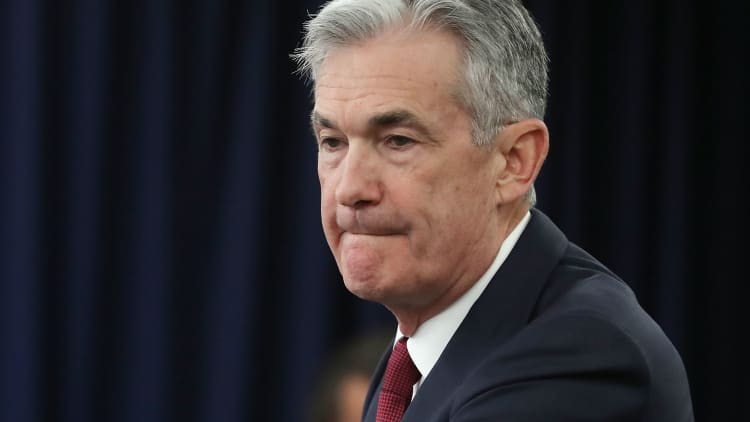
If Jerome Powell moves to cut interest rates by midsummer as the market now projects, the Federal Reserve chairman will be like a baseball manager calling for his best relief pitcher in the seventh inning to keep the game from getting out of hand rather than waiting until the ninth to close out a win.
As it happens, this is exactly the action today's analytically rigorous baseball wisdom advises — but runs counter to the typical conventions of the past few decades and the preferences and biases of many team managers.
Likewise, if the Fed were to shift from a steady tightening campaign to easing policy within eight months, before clear signs of pronounced economic weakness and without a chance to telegraph a smooth transition, it would mean Powell using his most potent weapon — an initial rate cut after a series of hikes — earlier than he'd planned or hoped, and before the Fed has typically done so in recent decades.
Since the 1980s, the job of a baseball "closer" was to seal a win by finishing a game his team was leading. Often this meant entering at the start of the ninth inning, with no runners on base and no threat underway, to earn a "save" — a statistic that brought closers enormous status and salaries.
This stat not only measured a reliever's value but dictated how closers were used: If a save was granted for finishing a game his team led by three runs or fewer (and under certain other circumstances) then the closer's role was defined as to appear only in "save situations."
Quantitative baseball minds have questioned this practice for years, pointing out that putting down a scoring threat earlier in a game — either to maintain a lead or to keep a game close — on average increased the odds of winning more than using inferior pitchers first while reserving the best to finish a game with only three easy outs left to get.
'High-leverage' situations
A few years ago a University of California, Berkeley paper demonstrated that the best relievers should be used in "high-leverage" situations, at key potential inflection points, no matter the inning.
Teams are listening. Josh Hader is the first-place Milwaukee Brewers' most dominant reliever, but fully one-third of his appearances this year have been in nonsave situations.
The bond market — radically compressing short-term Treasury yields to price in two to three quarter-point rate cuts by year's end — is arguing that the economy right now is in a high-leverage moment, a potential inflection point, even if the typical indicators don't suggest clearly that the expansion requires "a save."
Softening global growth, slippage in inflation readings and trade conflicts initiated by the Trump administration against China and Mexico have spooked market participants and business decision-makers.
Wall Street economists have rushed to match the market's message with forecasts of cuts. Barclays now sees three-quarters of a percentage point in cuts by December. Former Treasury Secretary Larry Summers argued for a half-point easing move as a kind of insurance policy against a downturn.
Drawbacks to the strategy
Fed officials have only obliquely embraced the rate-cut imperative, and by most indications Powell, like a traditionalist baseball skipper, isn't wholly comfortable yet in going to the bullpen at this stage, with the U.S. economy still holding up well and no proof that inflation is on a sustained downward path.
In past cycles, by the time the Fed first eased, the unemployment rate had turned higher, manufacturing indexes were in contraction, the leading economic indicators down sharply and/or credit conditions were stressed. These elements are absent now, so in traditional terms the economic game isn't in much imminent peril.
There are psychological and practical objections to adopting an easing posture this summer as well. Powell believed short-term rates just over 2% late last year were well below the "neutral" level, he hiked in December and entered 2019 with a stated policy of "patience" and a formal bias toward a further hike.
The trade-war headwinds are both serious — and potentially temporary. If the Fed were to ease in July (or even next week, as some insist) and then a deal is struck with China to remove all tariffs, perhaps the economy would reaccelerate, markets would celebrate and make it seem as if Powell wasted his best arm to defuse a flimsy threat in an easy win — and now may have lost that option for a tougher game tomorrow.
Another complicating factor: The Fed now has less than 2.5 percentage points worth of rate cuts in its bullpen.
Does this mean it should wait until they are clearly needed before using any?
Or does it argue for an earlier, aggressive cut sooner than later, in hopes that it shuts down the recession threat and allows "the offense" — revived business investment and consumer spending — to open a wider lead, reducing the need for more elite relief-pitching help?
For what it's worth, the Treasury yield curve suggests a quick rate cut or two soon could have just this result. While Treasury yields now slope down from 2.28% on three-month bills to 1.82% on three-year notes, yields then turn higher to 2.08% at 10 years and 2.58% at 30 years.
All else equal, this implies giving the crowd what it wants — a rate cut sooner than later — should forestall a recession and further slide in inflation.
One crucial difference between baseball bullpen management and central banking: The case for using closers well before the end of a game is based on probabilities that say such tactics pay off over a 162-game season. Powell has only one chance to wheel from tightening to easing. And the stakes he faces, it's fair to say, are a bit higher than the outcome of a ballgame.







